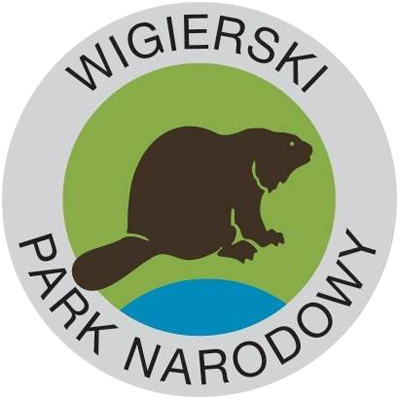Wigry National Park was created in 1989. It covers the area of over 150 km2, located in the Suwalki-Augustow Lake District, in the north-western part of the Augustow Forest. Park protects well-shaped and diverse landscape formed during the last glaciation. Extraordinary diversity of aquatic ecosystems -42 lakes, the largest and deepest lake Wigry, large rivers and water reservoirs along with smaller ones is a true and a special feature of the Park. Lakes of the Park vary in fertility, morphometry, concentration of humic and in other properties, representing at the same time all types of ecosystems in the European Lowlands. Harsh, north-eastern Polish climate makes the nature of the Park typical for the northern areas.
There are three main forms of protection here: - strict protection: that leaves the Park area only to the forces of nature and excludes any human activity (4.8% of the park), - active protection that carries out various operations aimed at the regeneration and “naturalization” of the nature once distorted. It can also mean to preserve the natural values of the plant communities and animal species (75% of the park), - protection of the landscape (20.2% of the park), the aim of which is to maintain or restore regional characteristics of the cultural landscape.
Most of the Park’s the area (62%) is covered by forests, 19% by water ecosystems, 17% by meadows, pastures and arable land, and 3% consists of settlements and roads. Diversity of habitats and microhabitats determines the high diversity of both plant and animal species. More than 100 plant communities is to be found here. Another of the characteristic feature of WNP is the presence of boreal species (with a range of the North), eg. Water lily small, low birch, twinflower, goodyera sided. There are circa 1000 species of vascular plants, 290 species of mosses, more than 300 species of lichens and more than 600 taxa of algae.
There are over 2,000 species of animals within the borders of Wigry National Park, among which the most numerous are understandably invertebrates. 31 species of fish live in its lakes, including most rare freshwater whitefish and European cisco. There has been found more than 210 species of birds, including approx. 160 breeding ones. Wide range of northern species of nesting birds such as redwing, nutcracker, crossbill spruce, hazel, pygmy owl and tengmalm, as well as the presence of tundra hare (the only place in Poland for this very species t occur), proves this land to be of boreal nature. Approx. 50 species of mammals can be spotted here.
Most of the wildlife active protection tasks are carried out by employees of the Wigry National Park, and are being supervised by external institutions. Employees of the Park remain responsible for the organization of scientific research and environmental monitoring programs, Park’s visiting programs , as well as educational activities and counter environmental offense actions . To achieve its objectives WNP cooperates with many both governmental and non-governmental institutions and organizations and makes use of both domestic and foreign sources of financing.
Natural ecosystems and landscape protection programs require a cooperation with local authorities, administration institutions, organizations as well as with local citizens.
Approx. 250 km of marked hiking trails, biking and skiing routs, 6 educational paths and many resting areas as long with the tourist information centers await the tourists. The biggest tourist attractions of the park, not mentioning its natural values of wildlife and landscape, among others include: post-Camaldolian monastery in Wigry, kayaking the Black Hańcza river, Lake Wigry cruises. The park offers a wide range of educational programs, addressed to all the visitors and tourists, hosting local schools students very frequently. Various workshops classes, open air competitions, permanent and temporary exhibitions, educational activities, lectures, conferences and meetings are being carried out here. Aforementioned classes are being conducted within the Park’s headquarters in Krzywe, as well as at the Centre for Environmental Education at Słupie and at Wigry Museum in Stary Folwark,. Some takes place in the field, on educational routes of WNP.
Find out more on:
http://www.wigry.org.pl/
